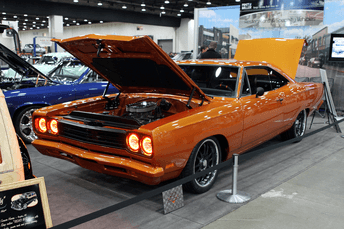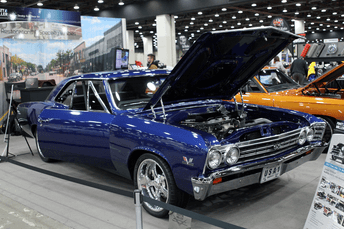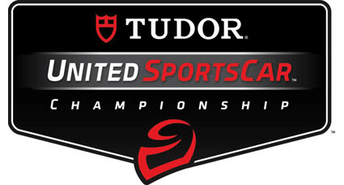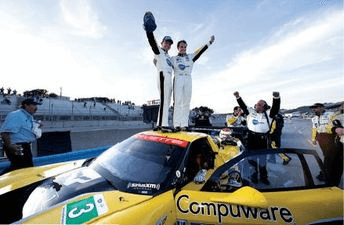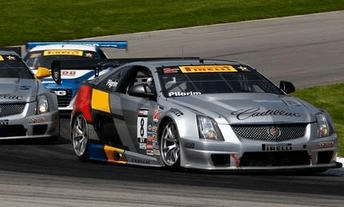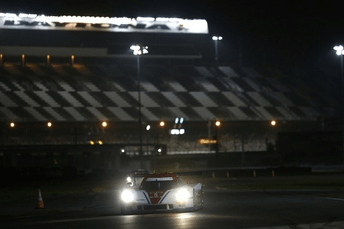http://www.drivingline.com/2014/01/rolex-24-hour-daytona-dale-earnhardt-sr
On January 24, 2014
There are very few sportsman of any discipline who attract real public attention outside of the activity that they excel in. In motorsport I have been fortunate to encounter three of these comets who’ve achieved celebrity status in my years at the races. Two on their way up the star charts and one with full superstar status, Dale Earnhardt Sr. During the 2001 Rolex 24 at Daytona, Dale Earnardt Sr. was in one of his last of many of races, and burning brightly…
Back in 1983 I was in the right place at the right time to see Ayrton Senna on his final countdown to becoming a Grand Prix star and World Champion. I described my interface with the great Brazilian HERE, though in all honesty I was no more than a passing face in the crowd to him.
Fast forward a decade or so to 1990. By now I had abandoned single seater racing in favour of endurance events, always the ultimate in my eyes. Changes in rules created shifts that helped lead to the unveiling of another bright star, Michael Schumacher.
The fantastically successful Group C formula had been based on a fuel economy rule, limiting the amount of fuel available, which encouraged turbos, rotary and normally aspirated engines of almost any configuration. This was changed and a new specification was mandated that was aligned to the current Formula One of 3.5-litre normally aspirated power plants. This drove away Nissan and Porsche and put the survivors, Toyota, Jaguar, Peugeot and Mercedes-Benz under considerable budgetary strain, these pure racers were very expensive. It also put paid to the majority of privateers who made up the bulk of the grid.
Of course the adverse conditions suited Messrs Bernie Ecclestone and Max Mosley who controlled both the FIA and the rule book. The ultimate objective of these changes was to drive the manufacturers and their deep pockets into the Grand Prix arena. One bright spark in this disagreeable season was the forming of the Mercedes Junior team, with none other than Michael Schumacher lining up alongside Heinz-Harald Frentzen, Karl Wendlinger and Fritz Kreutzpointner to compete for Sauber Mercedes in the Sports Prototype Championship.
I would like to pretend that I foresaw Michael becoming the great Champion that he did (in fact he was very highly rated, but so were Wendlinger and Frentzen in the programme). I had little interaction with Schumacher during this series, as my agency was shooting for Jaguar, so we were not exactly welcome in the Sauber garage.
The other issue that distracted from his performances behind the wheel was the disaster area that was the Mercedes Benz C291. The flat 12 3.5-litre engine suffered from all manner of problems that were most un-Mercedes like. In the end, the unit held together during the final round of the Championship at Autopolis, so Schumacher and Jochen Mass scored the car’s only victory.
Mercedes took advantage of this result to bin the project and head to the Grand Prix arena. By then Michael had made his Formula One debut with Jordan and was bound for stardom. Both Frentzen and Wendlinger also graduated to the Grand Prix circus, but none gaining as many Championships and records as Schumacher. After retiring in 2012, Michael recently incurred serious injuries while skiing, but we can pray he brakes through to a full recovery.
Meeting with these upcoming stars was one thing, my next encounter would be with a superstar at the height of his fame when I covered the 2001 Rolex 24 at Daytona International Speedway.
Dale Earnhardt Sr. was the face of NASCAR, seven time Winston Cup Series Champion and winner of no less than 76 NASCAR races. He was by any measure at the top of the tree.
There had been plans to involve Earnhardt in Corvette’s 2000 season, but some problems with his neck required surgery which meant postponing his Rolex debut for a year. The Corvette team was growing in authority during 2000 – closing the gap to the top dogs of the time, the Oreca Viper squad. Indeed the Vettes only lost out in the 2000 edition of the Rolex by 30 seconds, they were determined to go one better in 2001.
For 2001, two cars were entered by Pratt Miller on behalf of General Motors. In the #2 C5R was a driver line up of Ron Fellows, Johnny O’Connell, Chris Kneifel and Franck Freon – while joining Earnhardt #3 would be his son, Dale Jr., Kelly Collins and Andy Pilgrim. Senior had been very insistent that Pilgrim be part of his crew. I later spoke with Andy Pilgrim about his first encounter with Big E.
“In November 2000, we were testing the Corvette GT1 cars on the full Sebring track and it was the first time Dale Earnhardt and Dale Jr. had been in the cars. This was prior to them doing the Rolex 24 Hours of Daytona in February 2001. The Earnhardts had never driven in the Vettes before nor had they seen the track. I had already met Dale (Big E) and Dale Jr. the month before when the whole deal was announced. When Dale arrived at the track he grabbed me and asked me to take him around the track in my C5 street car, while Jr. went off with someone else. The street car Vette was the car that GM had given me to use during my time with the Corvette factory team. I had driven up in it from Boca Raton, about 125 miles south of Sebring.
I did a couple of slow 70 mph laps of Sebring with Dale in the passenger’s seat. I pointed out the apex of each of the corners and how the weird Sebring pavement changes. Meanwhile Dale was filling me in on how his new boat was coming along. I wasn’t totally sure he’d heard one word I’d said, to be honest, but I kept babbling on as best I could giving my top Sebring tips in a two or three slow laps.
As we came down the Ulmann Straight towards Sunset a third time, Dale piped up ‘My turn’. So I said ‘Alrighty, no problem,’ and pulled in the pit lane and we changed seats.
Dale asked if I was ready, suddenly I saw this little twinkle in his eye. I just knew this was not going to be good. Within a microsecond of the words ‘I’m ready’, coming out of my mouth Dale launched the car and we must have been doing 100 mph before exiting the pit lane. I closed my eyes, braced for the inevitable impact and started saying sorry for all the things I thought might affect my status in the hereafter.
After a few seconds I realized we were not impacting anything and that Dale had masterfully negotiated Turn 1 and that we were already braking for Turn 3. Dale had not only been listening but had put down every apex and was gaining confidence with every corner and gear shift.
As we were flying down the Sebring’s long back straight I was starting to relax, I could even think about getting out of the car and walking away, we were almost home, one more corner.
But wouldn’t you know it, there was more. Dale flew into the braking zone at Turn 17, a monster of a brake zone in any car, never mind a production car with zero downforce. As Dale went for third gear from flat out in fourth the car felt like it got hit by a truck and ripped sideways into a massive spin at over 130mph. Round and round we went until finally coming to rest about 8 feet from the bridge at the apex of turn 17.
I just sat in silence for a second and then looked at Dale. He had the biggest grin on his face. He looked at me and asked ‘You a nervous Nellie yet?’ ‘Nope’ I lied. He looked down at my feet and said. ‘Well that’s not what your feet are telling me,’ and he laughed. I laughed too, admittedly a more nervous laugh. He was right of course, my feet had almost pushed right through the fire wall as I braced myself. We calmly drove into the pits and parked. No one had really seen anything and nobody asked any questions, it was amazing.
Of course the question on my mind was why had we spun out? I’m sure some of you car fans can hazard a guess. My own little thought on it would be a grab for 3rd gear ended in a grab for 1st. That would have certainly caused the immediate spin.
Did we ever talk about it specifically, no? Am I sure Big E found 1st gear, pretty sure? Do I think he might have done it on purpose to bust my chops? From the mischievous look in his eyes after the spin, a distinct possibility ladies and gentlemen, a distinct possibility.”
Doug Fehan, the programme’s Project Manager, gave the management’s perspective of that first Sebring Test to my colleague Andrew Cotton.
“We had our first test at Sebring, Junior went first. He did 15 or 20 laps, and was slamming it, hammering it, but he crashed and demolished the front end of the car finding out what the limit was. He was used to wrecking NASCARs because there are 12 more sitting on the drive. I took him aside, and told him that doesn’t work here, and he felt terrible.
We got the car fixed and the next day it was Senior’s turn. He started out exactly the opposite. He starts out slow, works it up, he is turning some good lap times, he is in his rhythm, turning it up, and then he loses it at Turn 16 and destroys the back end of the car. All four tires flat-spotted. He is feeling really bad. I told him not to worry, it happens, but we don’t need it to happen again.
The next day we are having lunch, and all the parts are piled up in the shop. I didn’t point it out, but sat them so that it was in their eye-view. I wanted them to see it. Junior says something like ‘I can’t believe we caused all that damage,’ and I said, ‘Don’t worry about it. Here are a couple of pens, and after lunch you are going to sign every piece.’ We gave them to various charities.”
This was no PR flimflam for General Motors, there was a serious long term plan for Earnhardt to run at Le Mans when NASCAR days were behind him. “It was Senior’s dream to do Le Mans,” says Fehan, who firmly believed it was going to happen with Chevrolet. “They were amazingly fun people to work with because they could operate outside their environment, so were not encumbered by all the bull **** and oppression, the spotlights, every aspect of their lives controlled and manipulated.”
Kelly Collins, the other regular Corvette factory driver in the car, was extremely pleased to be partnering the Earnhardts, maintaining that in years to come he would have serious “rocking-chair equity” with his grandchildren while recalling the 2001 Rolex 24.
Father and Son demanded that they be treated exactly the same as the other drivers and soon became an integral part of the team. This is the point when I was introduced to Senior – he was cool, no other way of describing him, well aware of his status but comfortable with it. He listened to my inane babble and was gracious enough to feign interest. The PR guy also tipped me off for events like the above, where in front of a sizeable crowd of fans there was a small presentation to the drivers.
And Senior was not the only genuine star in the race, PLN was running in Porsche with his young co-driver, Gunnar Jeannette. We ran a piece a while back on that remarkable man HERE.
Living in the UK, we imagine that the sun shines all the time in Florida. So when I returned home after the 2001 Rolex 24 grumbling about cold, wet weather my complaints were dismissed as fantasy – they KNOW I have not been actually working but loitering on a sun kissed beach…well those of you who attended that race could show the scars…it was depressing, grey and soggy. Photographing it was no easy task, trying to stretch the transparencies from 100 ASA to 200 or even 400 to bring something to life in a leap of faith. Film, ah yes, film. The 2001 Rolex 24 would be the last event I would cover solely using that tried and tested method – a virus called digital was about to sweep all before it and pretty much destroy photography as a means of earning a living, still we call that progress.
The race began under cloud and soon the deluge arrived and it was Senior’s turn in the car. He proved to be a revelation, posting very quick lap times and seeming to really enjoy himself.
“He is out there, and asking if he can stay out,” Fehan recalled. “He was going as fast in the wet as he was in the dry. It dawned on me that on rain tires, the car was handling like a regular NASCAR, and he loved it. He called in and asked if he could stay in for a second stint, and I said ‘go ahead.’ Then he asked if he could do a third stint, and I said ‘sure.’ Then he wanted to do another one, but I said, ‘No, you gotta rest’. He did a great job.”
Pilgrim remembered his most famous television appearance mid-race. “Dale was used to the banking, and running 15 degree slip angle at Daytona for 500 miles, so they put me on the radio and I talked to him about where the slippery parts of the track were, where to be careful and that kind of thing. To be on the radio, talking to Big E was very cool.”
A broken half shaft on Saturday evening and again, this time with a transmission change, on Sunday morning put paid to the chances of #3 taking the top spot, but the #2 car ran faultlessly to inherit the lead with about three hours to go. It was going to be a famous victory for Corvette and General Motors. It certainly lifted the spirits…
Senior was pleased and proud to have been part of such an epic win and on a track that he had seen much success at, though only once in the Daytona 500. There was the future to consider…
Doug Fehan again, “He said that he was going to quit in two years, but he said to me that he would run one more year, and then come and do this – that this was real racing, and that he loved it. He was going to come to Le Mans to see the place, because I had been telling him so much about it. Every time I drive into it, I love it. It was a huge thing for me, and for him, and it would have been very cool for us to be the guys to do that with him. He was looking for new challenges, and never forgot where he came from.”
“He was immensely proud to be racing with Junior, and that cuts both ways. As a kid that probably hurts you because you have your dad looking out for you, but if he did it over again, he could have managed that better. Senior drove from the heart, before the brain caught up.”
But there was to be no fairy tale ending to this story – two weeks later on the last lap of the 2001 Daytona 500, Dale Earnhardt was involved in a collision and sustained fatal head injuries, NASCAR’s biggest star was gone. Motorsport had lost one of its greatest champions and for endurance racing and Le Mans it was a case of what might have been.
A big thank you to the Editor of Racecar Engineering, Andrew Cotton, for his help with this piece.
By John Brooks

